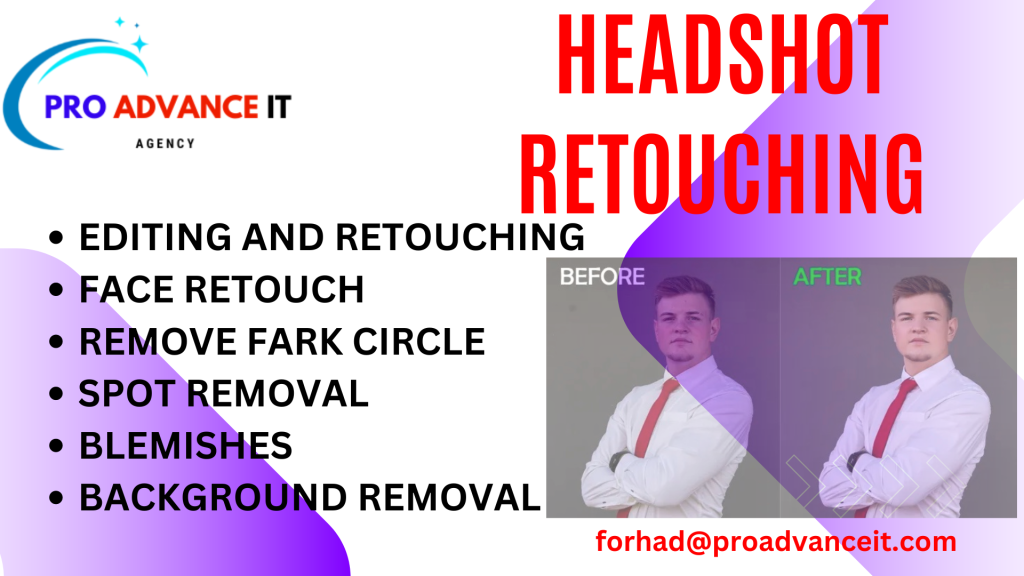5, Nov 2024
Professional Photo Retouching Before and After
Professional Photo Retouching Before and After: Transforming Images for Digital Marketing Success
In the digital age, where visual appeal is essential to capturing audiences, **professional photo retouching before and after** examples demonstrate the powerful impact of image enhancement on brand perception. By presenting polished, professional images, brands can communicate quality, appeal to emotions, and drive engagement. This article explores the significance of professional photo retouching in digital marketing, showcasing how transformations in imagery can elevate brands.

Table of Contents
1. Understanding Professional Photo Retouching Before and After
**Professional photo retouching before and after** involves the meticulous process of editing images to enhance or correct their quality. This service goes beyond simple adjustments, incorporating changes to lighting, color, clarity, and background to produce high-quality, visually striking results. Through the “before and after” comparison, brands can see the dramatic impact that professional retouching has on image appeal, revealing how subtle adjustments and refinements create a lasting impression.
2. Enhancing Product Photography for E-Commerce
In the competitive e-commerce sector, quality visuals are paramount, as online shoppers rely heavily on product images to make purchasing decisions. **Professional photo retouching before and after** examples of product photos highlight enhancements in clarity, detail, and color accuracy, which help customers feel confident about their purchase. For instance, jewelry and fashion brands benefit significantly from retouching, as it allows the intricate details of their products to stand out, creating a sense of luxury and appeal that encourages conversions.
3. Boosting Brand Identity Through Consistent Visuals
Consistency is essential in digital marketing, as a uniform look across all platforms builds trust and strengthens brand identity. **Professional photo retouching before and after** transformations can help brands maintain a consistent visual theme, making their content instantly recognizable. Whether it’s on social media, a website, or in advertising materials, professionally retouched images ensure that a brand’s visuals reflect its values, quality, and style. This consistency helps audiences connect with the brand and creates a lasting impression.
4. Social Media Success with Before and After Retouching
Social media is an invaluable tool for digital marketing, and high-quality visuals are key to standing out. **Professional photo retouching before and after** comparisons on social media show audiences the transformation from raw to polished images, giving them insight into the brand’s commitment to quality. Engaging “before and after” posts often resonates with followers, showcasing authenticity and the behind-the-scenes effort that goes into creating appealing content. This approach not only boosts engagement but also builds trust and readability.
5. The Power of Before and After Retouching in Advertising Campaigns
For advertising campaigns, first impressions are critical. Whether for online ads, print media, or outdoor promotions, the quality of images used in advertising can determine the campaign’s success. **Professional photo retouching before and after** results emphasize the power of retouching in achieving flawless images that align with a campaign’s goals. A well-edited image can captivate audiences, communicate brand values, and leave a memorable impression, all of which are vital for advertising success.
6. Choosing a Professional Retouching Service for Your Brand
Selecting the right retouching service provider is crucial for businesses looking to achieve impactful **professional photo retouching before and after** results. A professional service provider understands the nuances of different industries, offering tailored retouching solutions that enhance product features while preserving the brand’s style. Businesses should consider a provider’s experience, portfolio, and attention to detail, as these factors directly affect the quality and effectiveness of the retouching.
Conclusion
In digital marketing, visual content is a powerful tool, and **professional photo retouching before and after** transformations significantly enhance brand perception and engages audiences. From product photography to social media and advertising, professionally retouched images help brands convey quality and credibility. Investing in professional retouching services enables brands to present polished, consistent visuals that stand out in a crowded market, driving engagement and achieving digital marketing success.
- 0
- By admin
19, Oct 2024
High-End Photo Retouching Services
Table of Contents
Photo Retouching Service
In the fast-paced world of digital marketing, visual content plays a pivotal role in capturing attention and conveying messages effectively. One essential aspect of visual content is image quality, which can significantly influence a brand’s perception. High-end photo retouching services offer a professional touch that enhances images, making them more appealing and relevant. This article will explore how these services contribute to digital marketing, their importance, and their value to a brand’s identity.

1. What Are High-End Photo Retouching Services?
High-end photo retouching services are specialized techniques used to refine and enhance images, going beyond basic editing. These services involve removing imperfections, improving skin tones, adjusting colors, sharpening details, and creating a polished look that is suitable for advertising and branding. This level of retouching requires a trained eye for detail and proficiency in advanced editing software, often resulting in images that captivate audiences and evoke desired emotions.
Unlike standard photo editing, high-end retouching focuses on achieving a flawless finish without losing the natural look of the image. This attention to detail is crucial in fashion, e-commerce, and lifestyle brands, where high-quality visuals are directly linked to sales and customer engagement.
2. The Role of High-End Photo Retouching in Branding
In digital marketing, a brand’s image is everything. Companies that invest in high-end photo retouching services can create a consistent visual identity across all platforms. Whether it’s for social media posts, website banners, or advertising campaigns, the quality of images reflects the professionalism of the brand.
These services ensure that the photos used are not only attractive but also aligned with the brand’s message and values. For instance, fashion brands often use retouching to showcase flawless clothing, while beauty companies rely on it to present perfect skin tones and textures. By doing so, they strengthen brand perception and establish trust with their audience.
3. Enhancing Product Photography for e-commerce
Product photography is a critical component of any e-commerce strategy. Since online shoppers cannot physically touch or examine products, images serve as the primary source of information. Poor-quality photos can lead to decreased sales, as customers may doubt the reliability or quality of the product.
With high-end photo retouching services, businesses can enhance product images to highlight key features, ensure color accuracy, and remove any distractions. This can be particularly beneficial for industries like jewelry, apparel, and electronics, where customers rely on visual cues to make purchasing decisions. High-quality product images can increase trust and encourage potential buyers to complete a purchase..
4. Improving Social Media Content with High-End Retouching
In today’s digital marketing landscape, social media platforms are essential for brand promotion. However, standing out in a sea of content requires more than just posting frequently; it demands high-quality visuals that capture attention instantly.
High-end photo retouching services allow brands to post polished and professional images that align with their marketing goals. For instance, influencers and brands in the beauty industry often use retouching to enhance the overall aesthetic of their content. This attention to detail can make a significant difference in audience engagement, leading to increased likes, shares, and comments. Well-edited images can also improve brand credibility and help build a loyal following.
5. The Impact of High-End Retouching on Advertising Campaigns
In advertising, first impressions matter. Whether it’s a billboard, online ad, or magazine spread, the visual elements of a campaign must be striking to capture potential customers’ attention. High-end photo retouching services play a crucial role in ensuring that images used in advertisements are flawless and impactful.
A professionally retouched image can convey the brand’s message more clearly and effectively. For example, in luxury markets like fashion or automotive industries, high-end retouching is often used to emphasize the exclusivity and sophistication of the product. This polished presentation can make ads more memorable, increasing the likelihood of conversion.
6. Choosing the Right Photo Retouching Service Provider
Selecting the right provider for high-end photo retouching services is essential for businesses aiming to elevate their digital marketing efforts. The quality of the retouching can directly impact the effectiveness of marketing campaigns, product sales, and brand perception.
When choosing a service provider, it’s important to consider their experience, portfolio, and expertise in your industry. Look for professionals who understand your brand’s vision and can translate it into visually appealing content. A strong partnership with a retouching expert can lead to better results, enabling your business to thrive in competitive digital spaces.
Conclusion
In the realm of digital marketing, image quality should never be overlooked. High-end photo retouching services offer brands the ability to elevate their visuals, whether for product photography, social media content, or advertising campaigns. These services not only enhance the aesthetic appeal of images but also contribute to brand identity and customer engagement. By investing in professional retouching, businesses can present a polished and consistent image, gaining an edge in today’s competitive market.
Pro advance IT Services
• E-commerce product photo editing services
• Best Clipping Path Image Editing Service
• Jewelry Retouching in Photoshop Service
• Professional Image Masking Services
• Our Photo Color Correction Services
• Multi Clipping Path Service
• Our Ghost Mannequin Service
• Shadow Creation Service
• Photo Retouching Services
Contact Now: forhad@proadvanceit.com
5, Oct 2024
Best Background Photo For Editing
Background Photo Editing
In today’s digital world, visuals are crucial for creating engaging content, and one key element of this is choosing the right background photo for editing. Whether you’re working on social media posts, professional designs, or personal projects, having the right backdrop can make or break the final image. In this article, we’ll explore the importance of background photos, how to choose the best ones, and how they can enhance your editing process.
Table of Contents

1. Why Is Choosing the Right Background Photo for Editing Important?
Selecting the appropriate background photo for editing plays a vital role in the overall quality of your visual project. A mismatched or distracting background can pull focus away from the main subject, while a well-chosen backdrop can create a cohesive, aesthetically pleasing design.
For instance, a simple or neutral background in portrait photography can make the subject stand out, while an intricate or busy grounding may confuse the viewer. Understanding how different grounding affect the composition and mood of your images is the first step to successful editing.
2. Choose the Best Background Photo for Editing.
When choosing a background photo for editing, consider the following factors:
Relevance: Ensure that the grounding matches the theme and purpose of your project. For example, a natural background might work well for outdoor activities but may feel out of place in a tech-related design.
Resolution and Quality: High-resolution grounding photos are essential for maintaining image clarity, especially in large designs or print work. Always check the resolution to avoid pixelation.
Strong contrast can help highlight the subject, while harmonious colors can create a balanced, pleasing aesthetic.
Textures and Patterns: Depending on the project, you may want a textured grounding for added depth or a simple, flat background to keep it minimal. Make sure the textures don’t overpower the subject.
By carefully considering these elements, you can find the perfect grounding photo for editing that enhances your visuals.
3. Where to Find High-Quality Background Photos for Editing?
There are many resources available online for finding high-quality background photos for editing.
Stock Photo Websites: Websites like Unsplash, Pexels, and Pixabay offer a wide variety of free grounding photos for personal and commercial use. They feature categories ranging from nature and landscapes to abstract designs, making it easier to find exactly what you need.
Premium Stock Sites: If you need exclusive or higher-quality bacggrounds, platforms like Shutterstock and Adobe Stock provide premium options. Although these come with a price, they often include unique and professionally shot images.
Custom Photography: If stock photos don’t meet your needs, consider capturing your own bacggrounds. This allows you to tailor the photo to your specific requirements and ensures it’s completely unique.
By leveraging these resources, you can access a wide array of grounding photos for editing that fit any project.
4. How to Edit a Background Photo for Editing?
Once you’ve selected a bacgground photo for editing, the next step is to ensure it integrates seamlessly with your project. Here are some editing tips:
Adjust Brightness and Contrast: Balancing the brightness and contrast of the bacground helps to bring focus to the subject without overwhelming the viewer. UEditing tools like Photoshop or Canva can be used o fine-tune these settings.
Blur the Bacgground: For portraits or product photos, blurring the grounding can draw attention to the subject and create a more professional look. Most editing software includes a blur tool for this effect.
Color Adjustments: Sometimes, the colors of the grounding need tweaking to match the overall color scheme of the project.
Overlay Effects: Adding subtle overlays such as gradients, textures, or light flares can give depth and dimension to the grounding. Just be cautious not to overpower the main image with too many effects. These editing techniques help ensure your grounding photo for editing fits perfectly into your project while maintaining visual harmony.
5. Creative Uses for Background Photos in Different Projects.
The versatility of a grounding photo for editing makes it an essential asset in various digital marketing and design projects. Here are some creative ways to use grounding photos:
Social Media Graphics: Eye-catching grounding can significantly enhance social media posts, making them more engaging and shareable. A vibrant or themed background can align your content with seasonal events or trending topics.
Website Banners: Bacground photos are often used in website headers and banners to set the tone and style of the site. A well-placed background photo can make your website look more professional and inviting.
Presentations and Infs: In presentations, grounding photos can help visualize complex data or ideas. The right grounding adds a professional touch and helps retain the audience’s attention.
Product Photography: For e-commerce, the grounding of a product image is just as important as the product itself. A clean, simple bacground enhances product focus, while a lifestyle bacckground tells a story and engages viewers. No matter what type of project you’re working on, the right grounding photo for editing can elevate the overall impact.
6. Best Practices for Using Background Photos in Editing.
To get the most out of your bacgground photo for editing, follow these best practices:
Consider Your Audience: Make sure the bacgground photo resonates with your target audience. A professional-looking grounding is crucial in corporate settings, while a fun, colorful grounding may be more suitable for creative industries.
Test Different Options: Don’t hesitate to experiment with different bacggrounds during the editing process. Trying out multiple options can help you discover which one best complements your project.
Maintain Consistency: If you’re using multiple images in one project, ensure that the grounding is visually cohesive. This creates a uniform look and enhances overall design quality. By following these guidelines, you can effectively use grounding photos for editing to create visually compelling projects that captivate your audience.
Conclusion
The right background photo for editing can make a significant difference in any digital project. From social media posts to professional designs, understanding how to select, edit, and creatively use background photos is essential for achieving high-quality results. By focusing on relevance, quality, and composition, you can ensure that your grounding enhances the visual impact of your content, resulting in a more engaging and polished final product.
29, Aug 2024
Headshot Photography Editing
Headshot Photography Editing: Enhancing Your Professional Image
In the world of professional photography, editing plays a crucial role in transforming a good headshot into a great one. Headshot photography editing involves refining and enhancing images to ensure they reflect the subject’s best qualities while maintaining a natural and professional appearance. This article will delve into the importance of headshot photography editing, common editing techniques, and tips for achieving the best results.

Headshot Contents List
The Importance of Headshot Photography Editing
A professional headshot is often the first impression you make in a digital context, whether on LinkedIn, your company’s website, or social media profiles. However, even the best photographers can’t always capture the perfect shot straight out of the camera. This is where headshot photography editing comes in. Editing helps correct minor imperfections, adjust lighting, and enhance the image’s overall appearance. A well-edited headshot can make you look more approachable, confident, and polished—traits that are essential for professional branding. Headshot photography editing ensures your image aligns with the persona you want to project, making it a valuable step in the headshot process.
Common Headshot Photography Editing Techniques
When it comes to headshot photography editing, there are several techniques that photographers and editors use to perfect an image
Skin Retouching:
One of the primary goals of headshot photography editing is to create a smooth, even skin tone without losing the natural texture of the skin. This involves removing blemishes, reducing wrinkles, and evening out skin tones while ensuring the image doesn’t look overly retouched.
Color Correction:
Correcting the color balance in a photo can significantly impact the overall look of a headshot. This process involves adjusting the warmth, contrast, and saturation to ensure that the image looks natural and professional.
Background Enhancement:
Often, headshots are taken against plain or neutral backgrounds. During the editing process, the background can be adjusted to remove distractions or to enhance the overall composition, ensuring that the focus remains on the subject.
Lighting Adjustments:
Editing can correct lighting issues that may occur during the shoot, such as shadows, uneven lighting, or overly bright spots. Proper lighting adjustments can add depth to the photo and highlight key features of the subject.
Tips for Effective Headshot Photography Editing
To achieve the best results in headshot photography editing, it’s essential to keep a few tips in mind:
Match Editing Style to Branding: If the headshot is being used for professional branding, make sure the editing style matches the brand’s image. A corporate headshot may require more subtle editing compared to a creative industry headshot, where more artistic edits may be appropriate.
Choosing the Right Software for Headshot Photography Editing
There are various software options available for headshot photography editing, each with its own strengths and features. Here are some popular choices:
It offers extensive tools for retouching, color correction, and other advanced editing techniques.
Adobe Lightroom:
Lightroom is ideal for photographers looking to make quick, yet professional edits. It offers intuitive sliders for adjusting exposure, contrast, and color, making it perfect for headshot photography editing.
Capture One:
Known for its superior color grading and tethered shooting capabilities, Capture One is a favorite among many professional photographers. It offers precise control over every aspect of the image.
Affinity Photo:
A more affordable alternative to Photoshop, Affinity Photo offers many of the same powerful editing tools and is a great choice for those new to headshot photography editing.
Common Mistakes to Avoid in Headshot Photography Editing
Even with the best tools and techniques, it’s easy to make mistakes during the editing process.
Over-Retouching: One of the biggest mistakes in headshot photography editing is going overboard with retouching. Overly smooth skin, unrealistic eye color, or excessive teeth whitening can make the photo look fake.
Ignoring the Details: Small details can make a big difference in a headshot. Make sure to check for stray hairs, uneven skin tones, or background distractions that could take away from the overall quality of the image.
Neglecting the Original Photo’s Quality:
Editing can only do so much. If the original photo has significant issues with focus, composition, or lighting, no amount of editing can fully correct it. Always start with the best possible photo.
Conclusion
Headshot photography editing is an essential step in creating a polished, professional image that effectively represents you or your brand. By using the right techniques and avoiding common mistakes, you can enhance your headshots to look natural and engaging. Whether you’re a professional photographer or someone looking to improve their own headshots, understanding the basics of headshot photography editing can help you achieve the best possible results.
Remember, a well-edited headshot is more than just a photo; it’s a tool that communicates who you are to the world. Take the time to perfect your images through thoughtful editing, and you’ll be rewarded with headshots that make a lasting impression. Headshot photography editing is crucial for businesses as it ensures that professional images of employees are polished and aligned with the company’s brand image. Well-edited headshots convey professionalism, approachability, and credibility, helping to create a strong first impression with clients, partners, and stakeholders in both online and offline interactions.
Headshot Photography Editing Service
Skin Retouching: Smoothing skin, removing blemishes, reducing wrinkles, and evening out skin tone while maintaining a natural look.
Color Correction: Adjust brightness, contrast, saturation, and color balance to ensure accurate and flattering tones.
Background Enhancement or Removal: Cleaning up or altering the background to reduce distractions and maintain focus on the subject.
Lighting Adjustments: Correcting shadows, highlights, and exposure issues to improve the overall lighting of the headshot.
Eye Enhancement: Brightening eyes, sharpening details, and reducing red-eye or other distractions to make eyes stand out.
Teeth Whitening: Subtly whitening teeth to enhance the subject’s smile without looking unnatural.
Hair Retouching: Fixing stray hairs, adjusting hair volume, or making minor changes to hair color.
Sharpening and Detail Enhancement: Enhancing the clarity of key facial features to make the headshot crisp and detailed.
Color Grading: Applying specific color tones to match a particular style or branding requirement.
Minor Reshaping: Subtle adjustments to facial features or posture to improve symmetry and presentation.
Glare and Reflection Removal: Eliminating unwanted reflections from glasses or shiny skin areas.
Clothing Adjustments: Fixing wrinkles, stains, or minor clothing issues to ensure a polished appearance.








